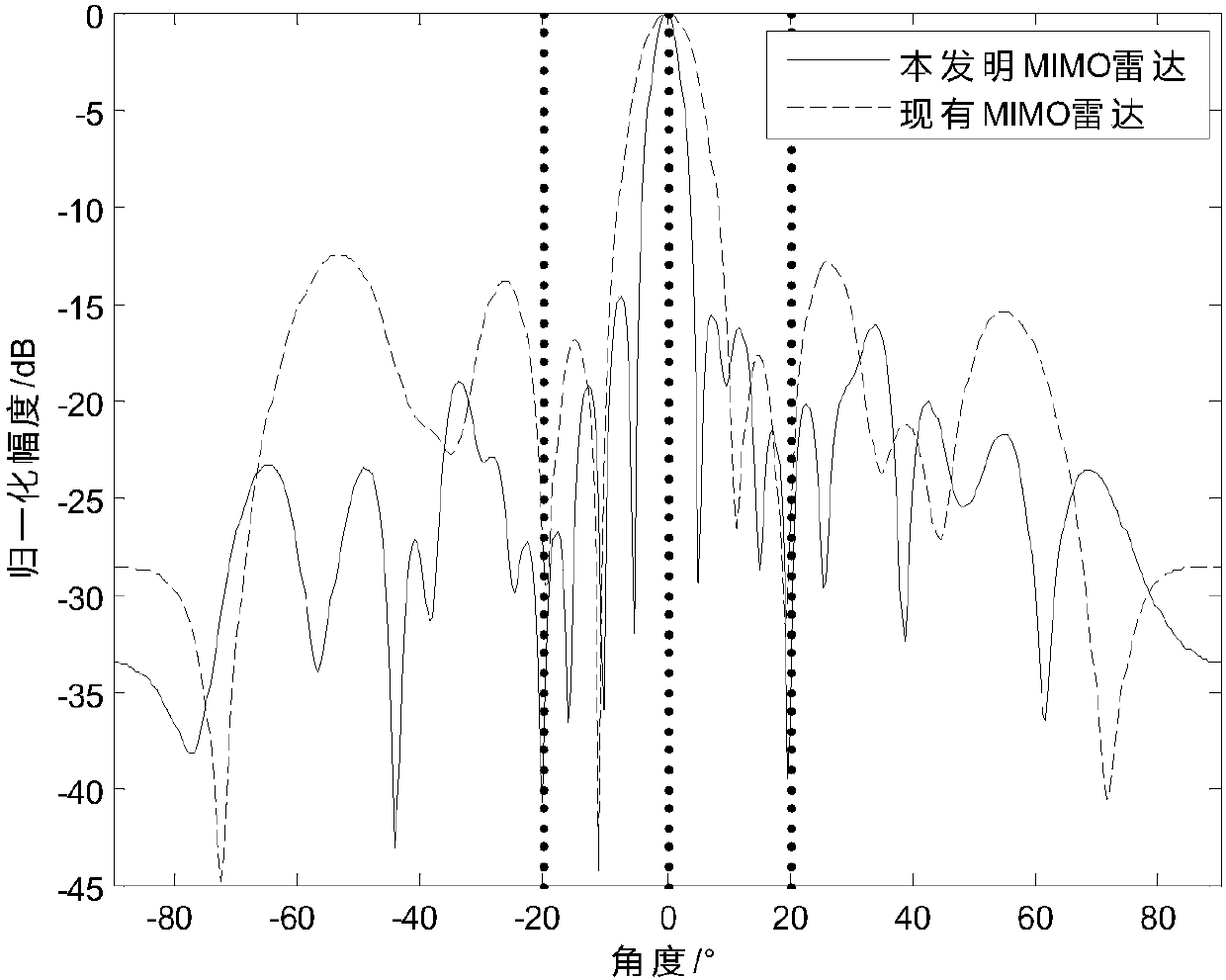MIMO radar anti-interference method based on nested array
An array and nesting technology, applied in the field of radar, can solve problems such as unrealizable engineering, limited degrees of freedom, and increasing radar antennas, and achieve the effects of easy engineering implementation, increased degrees of freedom, and improved performance
- Summary
- Abstract
- Description
- Claims
- Application Information
AI Technical Summary
Problems solved by technology
Method used
Image
Examples
Embodiment Construction
[0036] refer to figure 1 , the application scenario of the present invention includes a transmitting array of M array elements and a receiving array of N array elements. where the receiving array is a second-order nested array such as figure 1 As shown in (b), the second-order nested array consists of two uniform linear arrays cascaded: the first-level uniform linear array has N r1 array elements, array element spacing d r1 =1 / 2λ, λ is the wavelength of the transmitted signal, and the mth array element is located at md r1 , m=1,2,...,N r1 , the second uniform linear array has N r2 array elements, array element spacing d r2 =(N r1 +1)d r1 , the nth array element is located at n(N r1 +1)d r1 , n=1,2,...,N r2 . The transmit array is constructed with the first and last elements of the nested array as figure 1 As shown in (a), the array element number M=2.
[0037] refer to figure 2 , the implementation steps of the present invention are as follows:
[0038] Step 1:...
PUM
 Login to View More
Login to View More Abstract
Description
Claims
Application Information
 Login to View More
Login to View More - R&D
- Intellectual Property
- Life Sciences
- Materials
- Tech Scout
- Unparalleled Data Quality
- Higher Quality Content
- 60% Fewer Hallucinations
Browse by: Latest US Patents, China's latest patents, Technical Efficacy Thesaurus, Application Domain, Technology Topic, Popular Technical Reports.
© 2025 PatSnap. All rights reserved.Legal|Privacy policy|Modern Slavery Act Transparency Statement|Sitemap|About US| Contact US: help@patsnap.com



